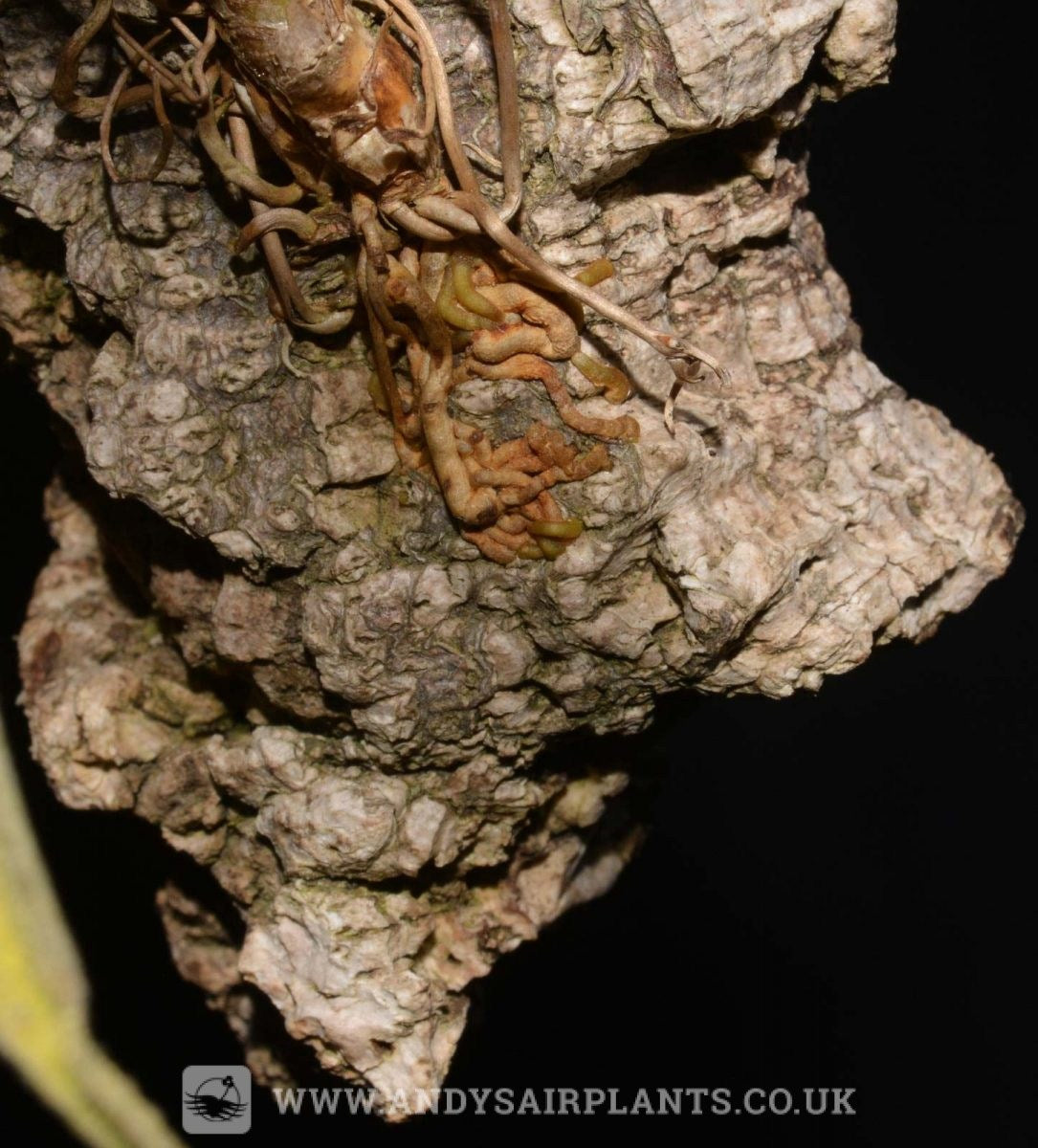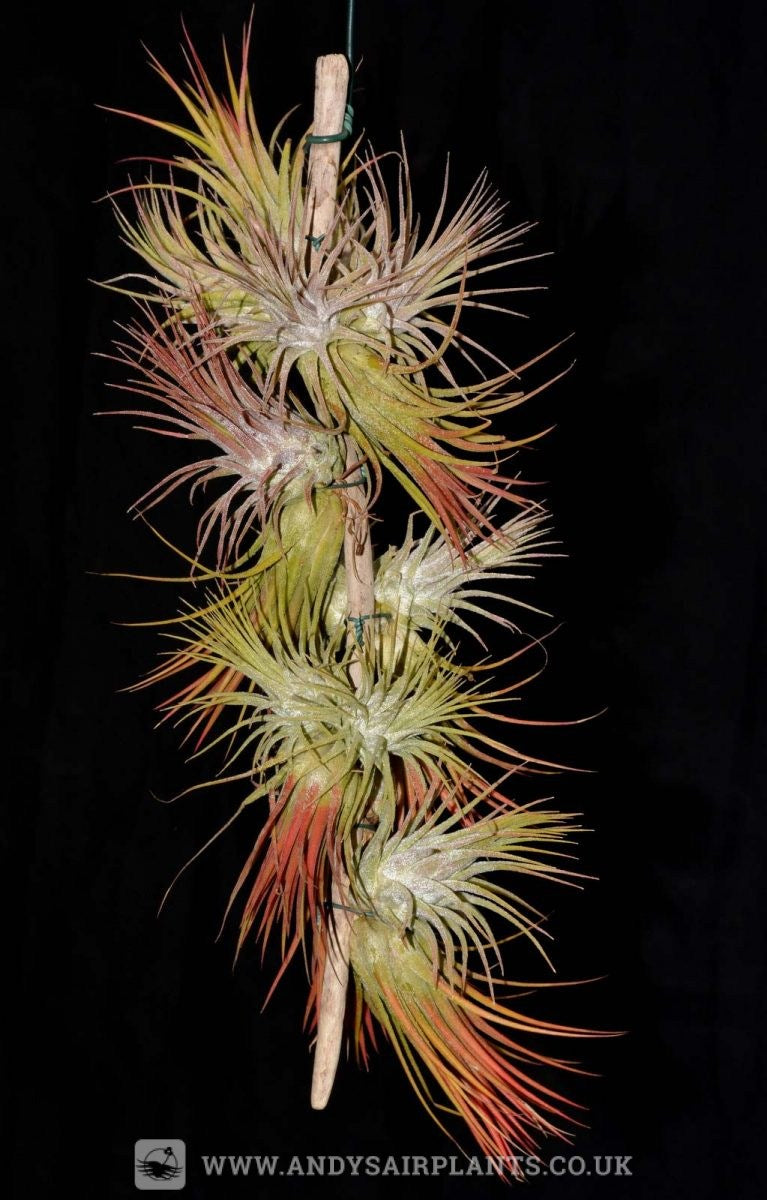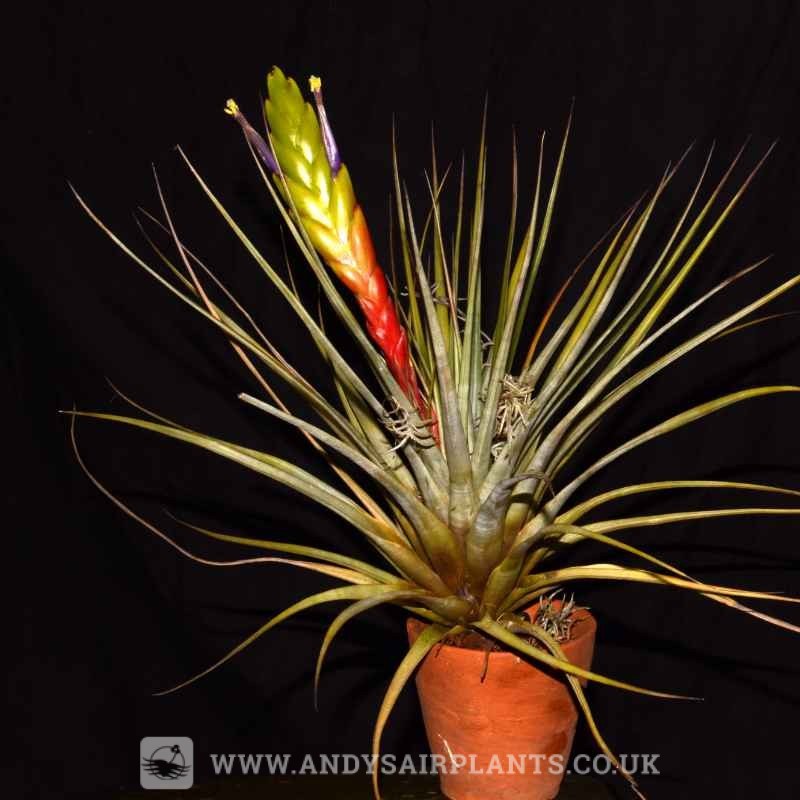Mounting and Displaying your Air Plants
After you have received your plants you can start to think about mounting and displaying your air plants, the possibilities are endless.
Tillandsia’s have a very superficial root system that is only used for anchorage, this means that you have much flexibility in how you choose to display or grow your plants. A happy Tillandsia will root on to almost anything, but don’t worry if your plant does not root much, many plants grow to full size, flower and clump without hardly ever putting out roots.
I like to display my plants or mount them onto natural materials like drift wood or sticks, pieces of bark or even rocks. Very often and for convenience I just hang my plants from wire and often they just root out into the air.
When selecting mounting material like bark or drift wood it is important to choose material that is not decaying as this can invite pests and fungus that can in turn damage your plants.

Tillandsia roots
Plants can be placed on horizontal displays for tables or window displays or they can be tied to hanging displays such as drift wood, which makes them great for small spaces, windows in the home, balcony gardens or in the Conservatory.
When tying a plant to a mount care must be taken that the plant is not constricted as it grows, you can use small strips of old stocking, silicone wire, string or plastic coated wire, but remember Tillandsia’s are allergic to copper and some other metals so plastic coated wire is best. Glue can also be used especially for small, fiddly or delicate species such as T. ionanthas. If you use glue try to use a small amount on the leaf bases and not put any on the very base where roots or new pups can emerge.

Tillandsia ionantha, multiple plants mounted together
Multiple plants or even different species can be mounted together providing they require the same conditions as each other ie high light levels.
Mesic or more humid growing species such as Tillandsia punctulata and cyanea have more of a root system and so tying some bark chip and moss around the base of the plant when mounting is advisable or they can be grown in pots with a 60-40 % potting bark or pumice, with peat or coir mix, or similar.

Tillandsia fasciculata fully rooted into a pot of 100% potting bark
Follow me on Facebook and Instagram for tips and techniques for mounting and displaying your air plants.

My first order with Andy’s air plants and definitely not my last! Plants came in perfect condition and packaged with care. Any questions I had Andrew replied very quickly and was extremely helpful.
Thank you Andrew.
My first order with Andy’s air plants. Perfect condition plants and lots of care taken with packaging. Andrew reliped very quickly to questions I had. I would definitely recommend and I will be getting all future plants from here.
Thank you Andrew!
I have just received my latest air plants and I am once again thrilled with the condition they are sent😀👏
They are now residing happily in my bathroom and I am thinking which one will I have next😀
Lynne Carvell
I have just received my latest air plants and I am once again thrilled with the condition they are sent😀👏
They are now residing happily in my bathroom and I am thinking which one will I have next😀
Lynne Carvell
I have just received my parcel of air plants which I ordered on Monday. They were very well packaged and are excellent looking and healthy plants can’t wait to get them in place. Many thanks for the care and attention you have shown. I will certainly buy again and recommend to others